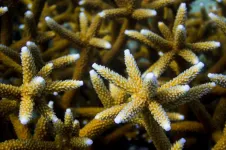(Press-News.org) Although the emissions targets for aviation are in line with the overall goals of the Paris Agreement, there is a high likelihood that the climate impact of aviation will not meet these goals, according to a new study.
Aviation is an important contributor to the global economy, but contributes to climate change by creating carbon dioxide (CO2) as well as non-CO2 effects such as forming nitrogen oxides, ozone and contrailcirrus clouds, which all contribute to global warming.
Researchers believe that, as long as the industry stages a recovery, the restrictions placed on global air travel in response to COVID-19 lockdown will only have a temporary effect on the overall climate impact of aviation.
Publishing their findings today in Nature Communications, an international research team including experts from the University of Birmingham believes that non-CO2 effects will continue to make a major contribution to aviation's climate impact over the coming years.
However, these effects are not included in the International Civil Aviation Organisation's (ICAO) goal of climate neutral growth and only partly addressed in Flightpath 2050 - the European Commission's vision for aviation.
Although Flightpath 2050 emissions goals are likely to stabilise aviation's climate impact and ICAO's offsetting scheme CORSIA will surpass the climate target set to support the Paris Agreement's 1.5 °C goal between 2025 and 2064, the researchers warn that an increasing aviation-induced global warming effect is likely despite the implementation of a range of mitigation options within the sector.
Study co-author Dr Simon Blakey, Senior Lecturer in Mechanical Engineering, at the University of Birmingham, commented: "Technological improvements to engines and airframes and operations won't be enough to sufficiently reduce the impact of aviation on climate change. We must explore all mitigation options in parallel - including the increased use of sustainable fuels and market based measures in order to limit aviation's impact on the environment.
"Accounting for sustainable fuels must include the impact of non-CO2 emissions in use as well as the CO2 emissions in fuel production. If we base all our calculations on CO2 alone, we miss the large improvements in non-CO2 emissions that these fuels can offer, particularly in reducing particulate matter emissions which contribute to an increased warming effect at cruise conditions."
There is currently significant interest in policies, regulations and research aiming to reduce aviation's climate impact. The researchers modelled the effect of these measures on global warming, analysing potential technical improvements and challenging assumptions of sector targets with a number of scenarios up to 2100.
Their assessment also covered several COVID-19 recovery scenarios, including changes in travel behaviour, as well as including feasible technological advancements and the availability of sustainable aviation fuels.
In order to better understand the possible implications of the pandemic on the climate impact of aviation, the researchers assessed three different pathways for the international recovery from the lock-down of nation states and the associated dramatic reduction in air travel.
They took into account a fast recovery of three years, a slow recovery of 15 years and a change in habits due to experiences during the lock-down, for example, a shift towards web conferences instead of face-to-face meetings.
INFORMATION:
For more information, interviews or an embargoed copy of the research paper, please contact Tony Moran, International Communications Manager, University of Birmingham on +44 (0)782 783 2312 or pressoffice@contacts.bham.ac.uk For out-of-hours enquiries, please call +44 (0)7789 921 165.
Notes to Editors
The University of Birmingham is ranked amongst the world's top 100 institutions, its work brings people from across the world to Birmingham, including researchers and teachers and more than 6,500 international students from over 150 countries.
'Evaluating the climate impact of aviation emission scenarios towards the Paris agreement including COVID-19 effects' - Volker Grewe, Arvind Gangoli Rao, Tomas Grönstedt, Carlos Xisto, Florian Linke, Joris Melkert, Jan Middel, Barbara Ohlenforst, Simon Blakey, Simon Christie, Sigrun Matthes and Katrin Dahlmann is published in Nature Communications.
Partner institutions include Deutsches Zentrum für Luft- und Raumfahrt (DLR), Oberpfaffenhofen, Germany; Delft University of Technology, Netherlands; ECATS International Association, Brussels, Belgium; Chalmers University of Technology, Gothenburg, Sweden; Royal Netherlands Aerospace Centre, Amsterdam, Netherlands; University of Birmingham, UK; University of Sheffield, UK; and Manchester Metropolitan University, UK.
Warming seas are driving many species of marine life to shift their geographic ranges out of the tropics to higher latitudes where the water is cooler. Florida's reefs will not be able to make that northward move, however, as they will be caught between intolerably hot tropical waters and increasingly frequent water-cooling cold snaps, according to new findings from Florida Institute of Technology, the U.S. Geological Survey, and several other institutions to be published June 22 in Nature's Scientific Reports.
Populations of the main species of reef-building corals are ...
Published in The Lancet Regional Health - Europe and part-funded by National Institute for Health Research (NIHR) Maudsley Biomedical Research Centre, the study identified that people with multiple respiratory conditions were most likely to develop depression and anxiety later on. This has possible implications for future healthcare services if the Covid-19 pandemic brings about increases in long-term respiratory issues. The study confirms the importance of integrating mental health support early into care plans for those with multiple physical health conditions.
This is the first study of ...
6.4% of the European population suffers from depression, according to a study published in The Lancet Public Health. The work was led by researchers from King's College London, the Hospital del Mar Medical Research Institute (IMIM), the Parc de Recerca Sant Joan de Déu-Institut de Recerca Sant Joan de Déu, the Institute of Biomedicine at the University of León (IBIOMED), and the CIBER on Epidemiology and Public Health (CIBERESP). This figure is higher than that estimated by the World Health Organisation (WHO), which calculated the prevalence of this pathology ...
BEER-SHEVA, ISRAEL, June 22, 2021 -- Researchers at Ben-Gurion University of the Negev (BGU) have developed the first methodology to assess symptoms associated with continuous exposure to traumatic stress from rocket attacks and other security threats, which are not currently measured by diagnostic criteria.
Published in the journal END ...
Researchers have shown why people with mental health disorders, including anorexia and panic disorders, experience physical signals differently.
The researchers, from the University of Cambridge, found that the part of the brain which interprets physical signals from the body behaves differently in people with a range of mental health disorders, suggesting that it could be a target for future treatments.
The researchers studied 'interoception' - the ability to sense internal conditions in the body - and whether there were any common brain ...
Post-traumatic stress disorder (PTSD) and migraine often co-occur, but researchers knew relatively little about how or why this happens. A new study in Frontiers in Neuroscience is the first to investigate if the conditions have a common genetic basis. By studying identical twins, where one twin in each pair lives with PTSD or migraines and the other twin does not, the researchers found common genes that may play a role in both conditions. These genes may help to explain why the conditions co-occur, and could reveal new treatment targets for both.
PTSD is a psychiatric disorder that typically occurs after a traumatic experience, such as a life-threatening event. Most people will experience a traumatic event ...
Plastic is practical, cheap and incredibly popular. Every year, more than 350 million tonnes are produced worldwide. These plastics contain a huge variety of chemicals that may be released during their lifecycles - including substances that pose a significant risk to people and the environment. However, only a small proportion of the chemicals contained in plastic are publicly known or have been extensively studied.
A team of researchers led by Stefanie Hellweg, ETH Professor of Ecological Systems Design, has for a first time compiled a comprehensive database ...
BINGHAMTON, N.Y. -- Mental distress tends to be lower in the summer when compared to the fall, according to new research from Binghamton University, State University of New York.
"Our results suggest that summertime is associated with better diet quality, higher exercise frequency and improved mood. This is important for the post-COVID era as we are getting into the summer season," said Lina Begdache, assistant professor of health and wellness studies at Binghamton University.
Begdache had previously published research suggesting that mental ...
X-ray photoelectron spectroscopy (XPS) is often used to determine the chemical composition of materials. It was developed in the 1960s and is accepted as a standard method in materials science. Researchers at Linköping University, Sweden, however, have shown that the method is often used erroneously.
"It is, of course, an ideal in research that the methods used are critically examined, but it seems that a couple of generations of researchers have failed to take seriously early signals that the calibration method was deficient. This was the case also for a long time in our own research group. Now, however, we hope that XPS will be used ...
PULLMAN, Wash. - A tiny bee imposter, the syrphid fly, may be a big help to some gardens and farms, new research from Washington State University shows.
An observational study in Western Washington found that out of more than 2,400 pollinator visits to flowers at urban and rural farms about 35% of were made by flies--most of which were the black-and-yellow-striped syrphid flies, also called hover flies. For a few plants, including peas, kale and lilies, flies were the only pollinators observed. Overall, bees were still the most common, accounting for about 61% of floral visits, but the rest were made by other insects and spiders.
"We found that there really were a dramatic number of pollinators visiting flowers that were not bees," said Rae Olsson, a WSU post-doctoral ...

